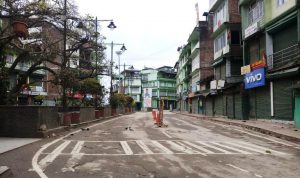Almost two months ago, India’s northeastern state of Sikkim was put on high alert along with six other states in the country to prevent the spread of the novel coronavirus.
Unlike the other states of India, Sikkim was considered more vulnerable owing to its contiguity to Bhutan, Nepal, and China, where COVID-19 cases had already been detected. In the first week of April, a person also died from the infection at Kalimpong in West Bengal which was only 70 kilometers from Sikkim.
Clearly, danger was knocking on Sikkim’s door and the state government started its fight against the disease weeks before the central government began issuing advisories in this regard.
SD Dhakal, secretary to Sikkim chief minister Prem Singh Tamang, was quoted by the media as saying that an action plan was being implemented weeks ahead of the state being put on high alert in March. He disclosed the slew of measures adopted to check the spread of the virus in the border state.
The first step that was announced was the closure of tourist destinations on March 4 along with hotels, restaurants, cinema halls, schools, and colleges, all of which were shut down two weeks later to prevent large gatherings of people.
All the entry points along the state’s borders with the three countries were sealed which included Nathu La along the India-China border. Only two gates at Rangpo and Melli were allowed to function as entry and exit points with West Bengal, with sufficient safeguards.
From January 29, health professionals were stationed at the border to screen people who entered the state. All the 80 samples sent to outstation laboratories for testing have come out negative for COVID-19 so far. Sikkim is likely to have its first testing laboratory soon.
Raw materials and essential commodities are being transported with full precaution. The trucks carrying the items are being sanitized at the borders. Transit camps for truck drivers commuting to the state have been set up at every district. Local drivers are entrusted to drive the trucks from the inter-state border gates to different destinations.
Meanwhile, the Sikkim government has also begun the process to bring back stranded students, patients, and other people of the state stranded in different parts of the country due to the lockdown.
State chief secretary S C Gupta told reporters that the task force constituted for this purpose will implement a plan to bring back people in stages. He pointed out that as many as 6,424 people from Sikkim have been stuck in different cities around the country. As a prerequisite, they would have to register with the Aarogya Setu App launched by the central government to return to their home state.
The government is also planning to unveil a plan to boost the rural economy during the lockdown period. The economy is expected to slow down due to the ban on tourism, which has contributed around 8 percent to the state’s gross domestic product. The sector has witnessed a growth rate of 10 to 12 percent in the last decade or so.
Besides, Sikkim, the three border states of Nagaland, Arunachal Pradesh, and Manipur in India’s Northeast have also been declared free from COVID-19. The frontier region has been less impacted by the virus compared to other regions with 75 cases so far out of a total of more than 46,000 in the entire country. Most of the state governments in the Northeast had swung into action quite early with specific plans of action that began with the sealing of their international and inter-state borders.
Rajeev Bhattacharyya is a senior journalist in Assam, India.

































